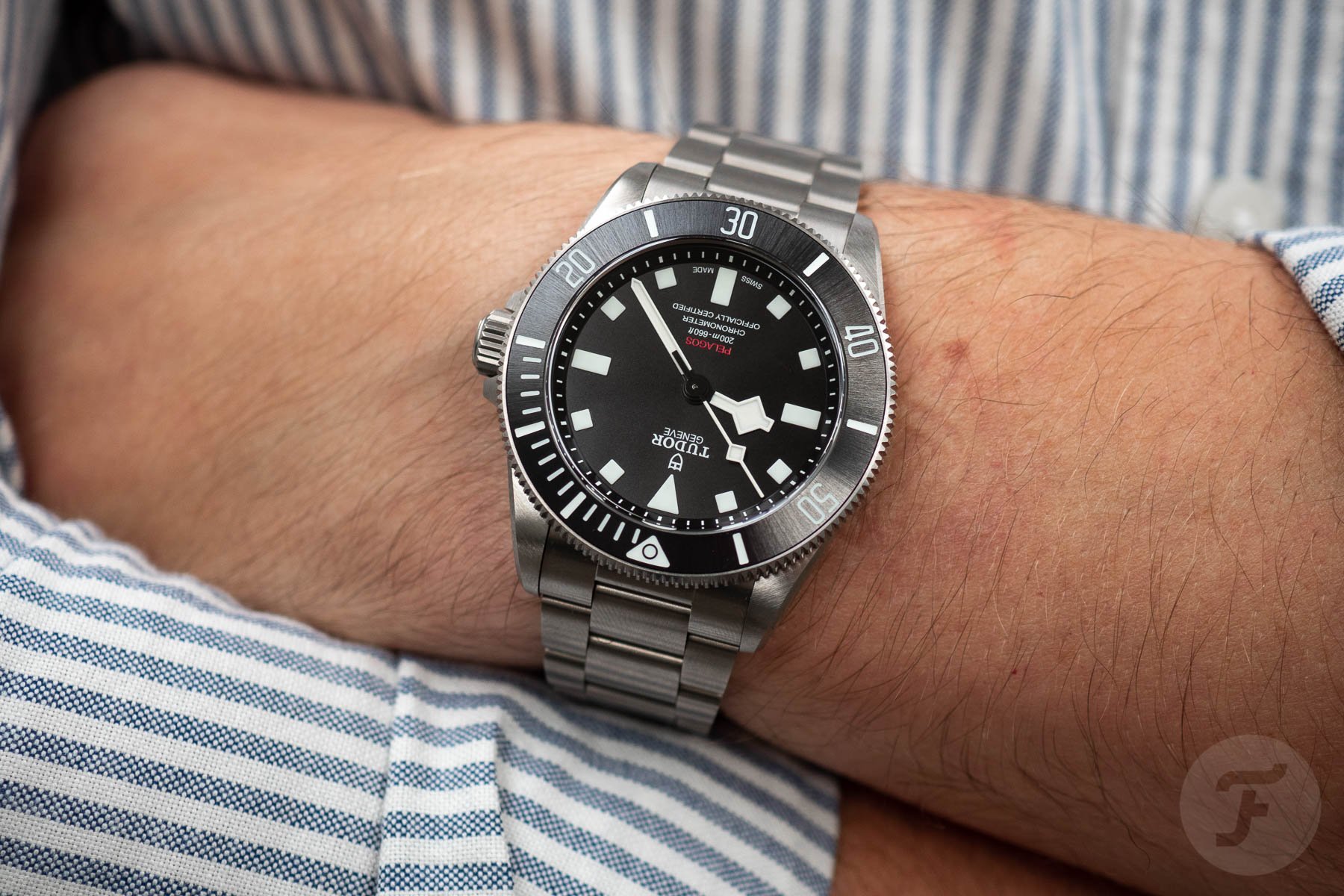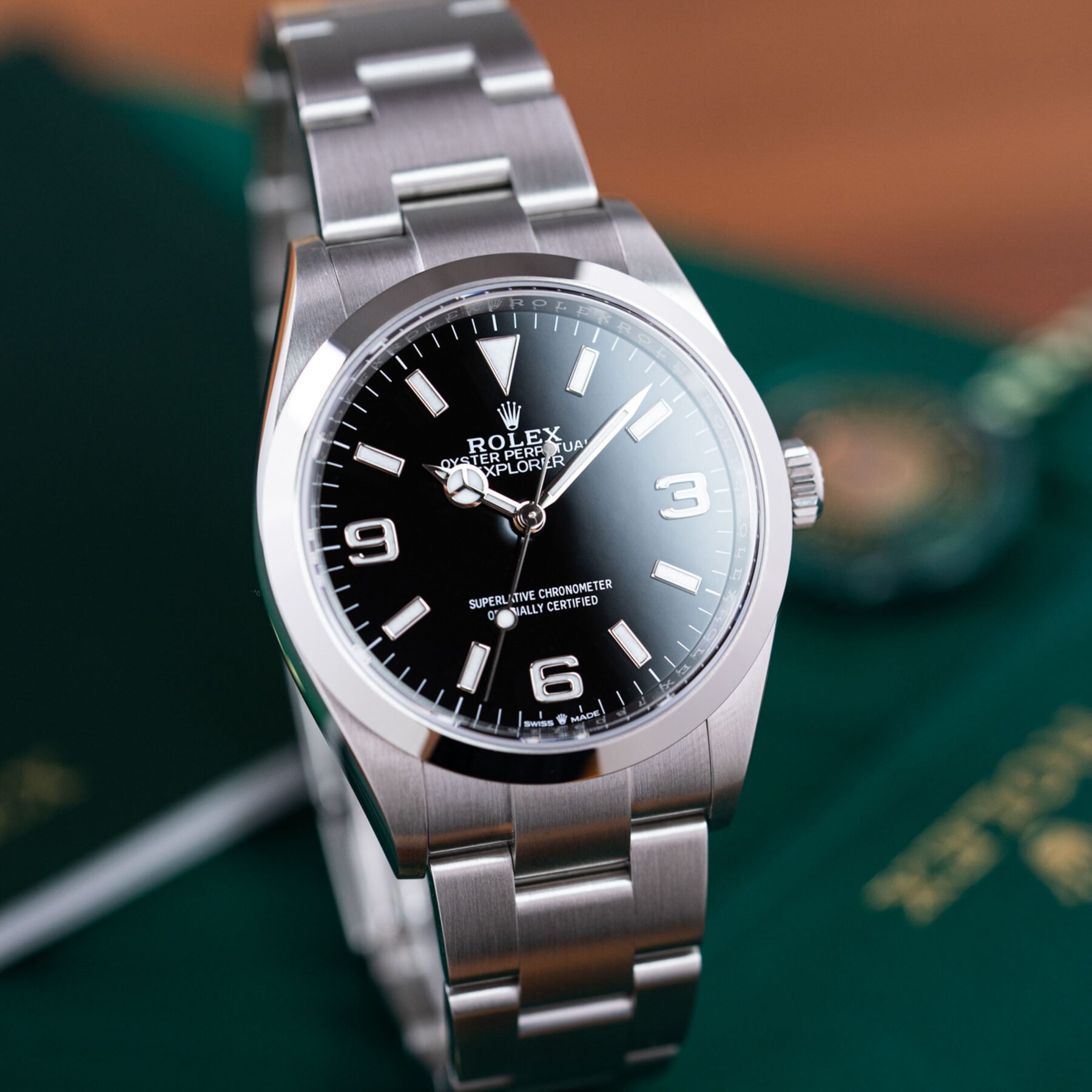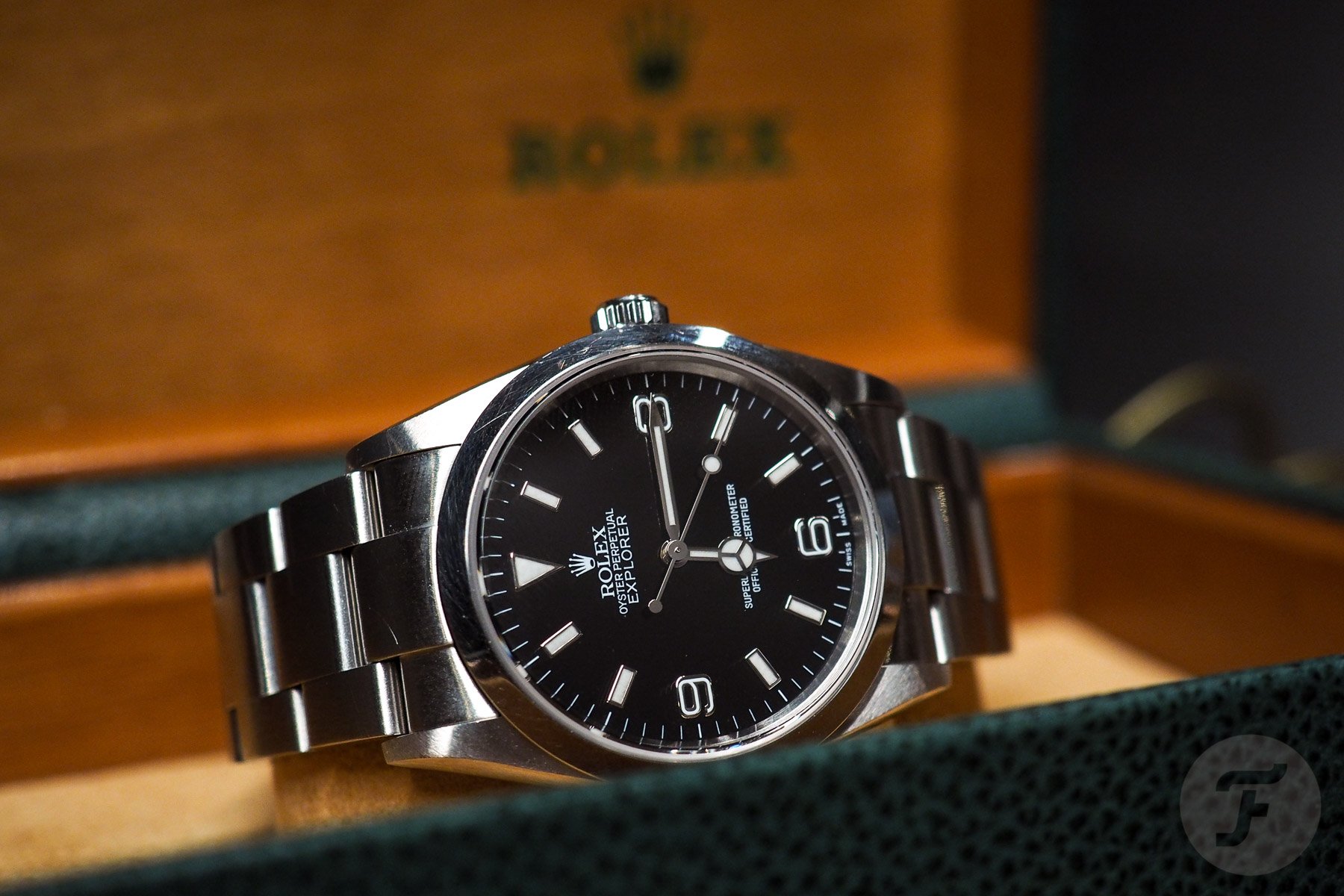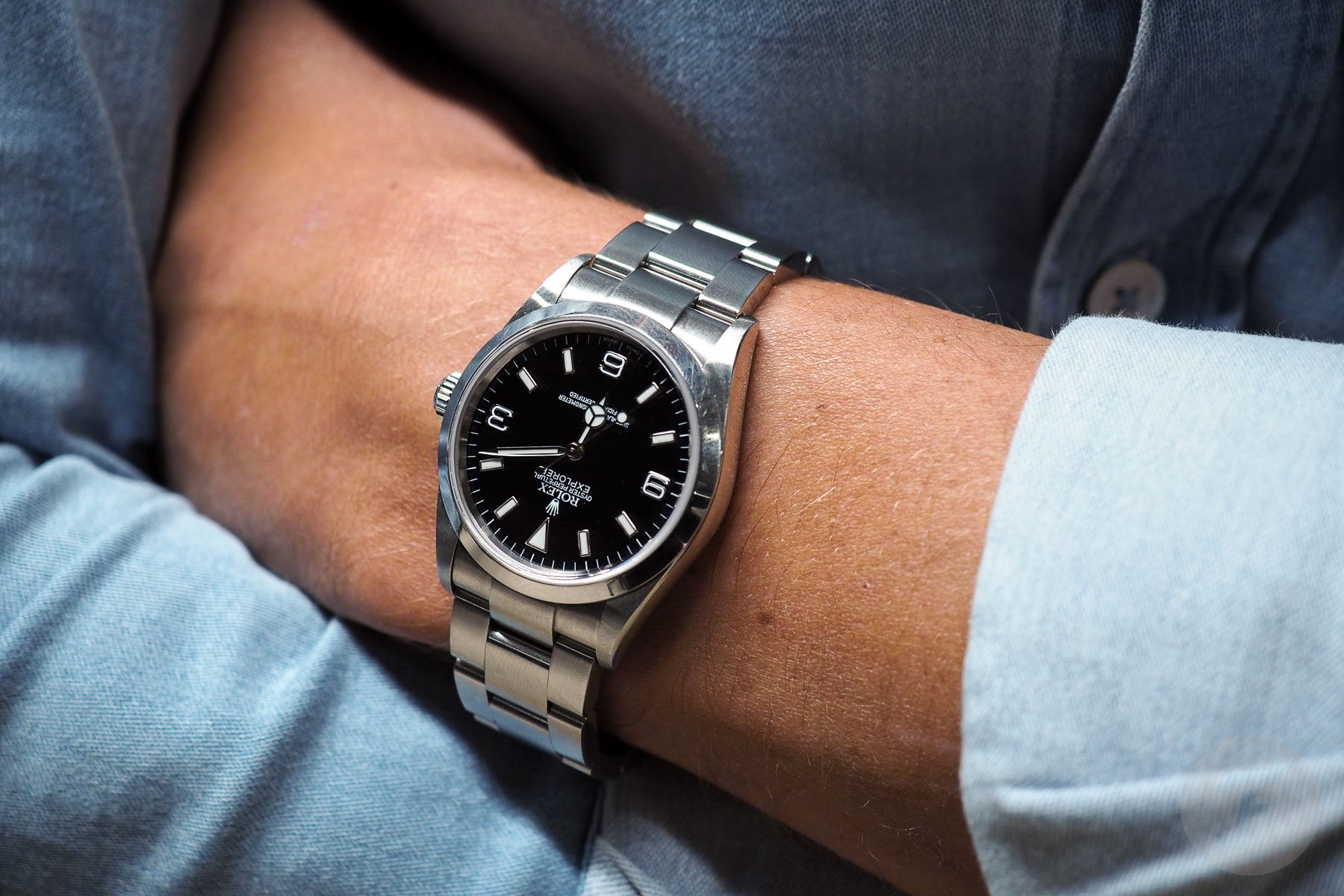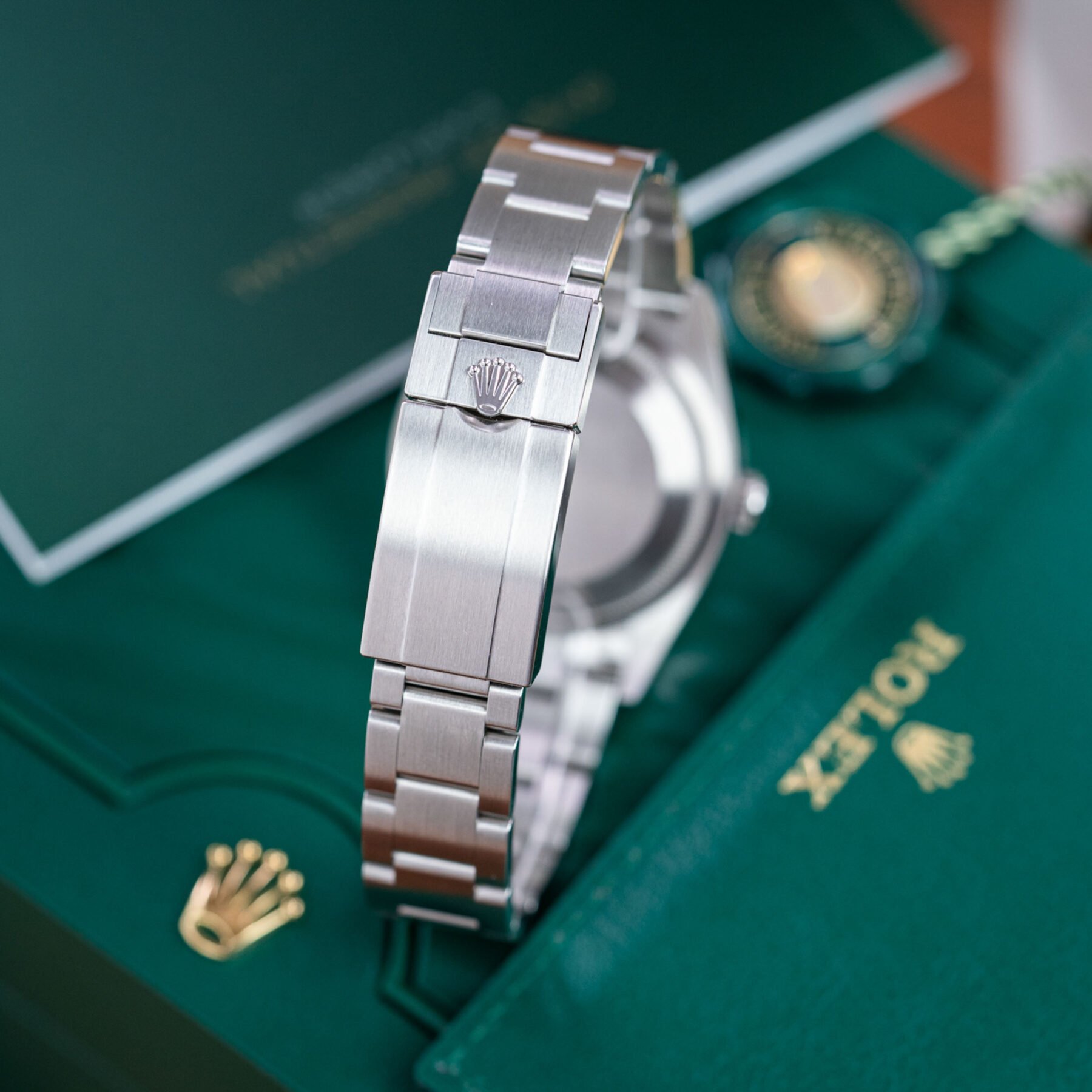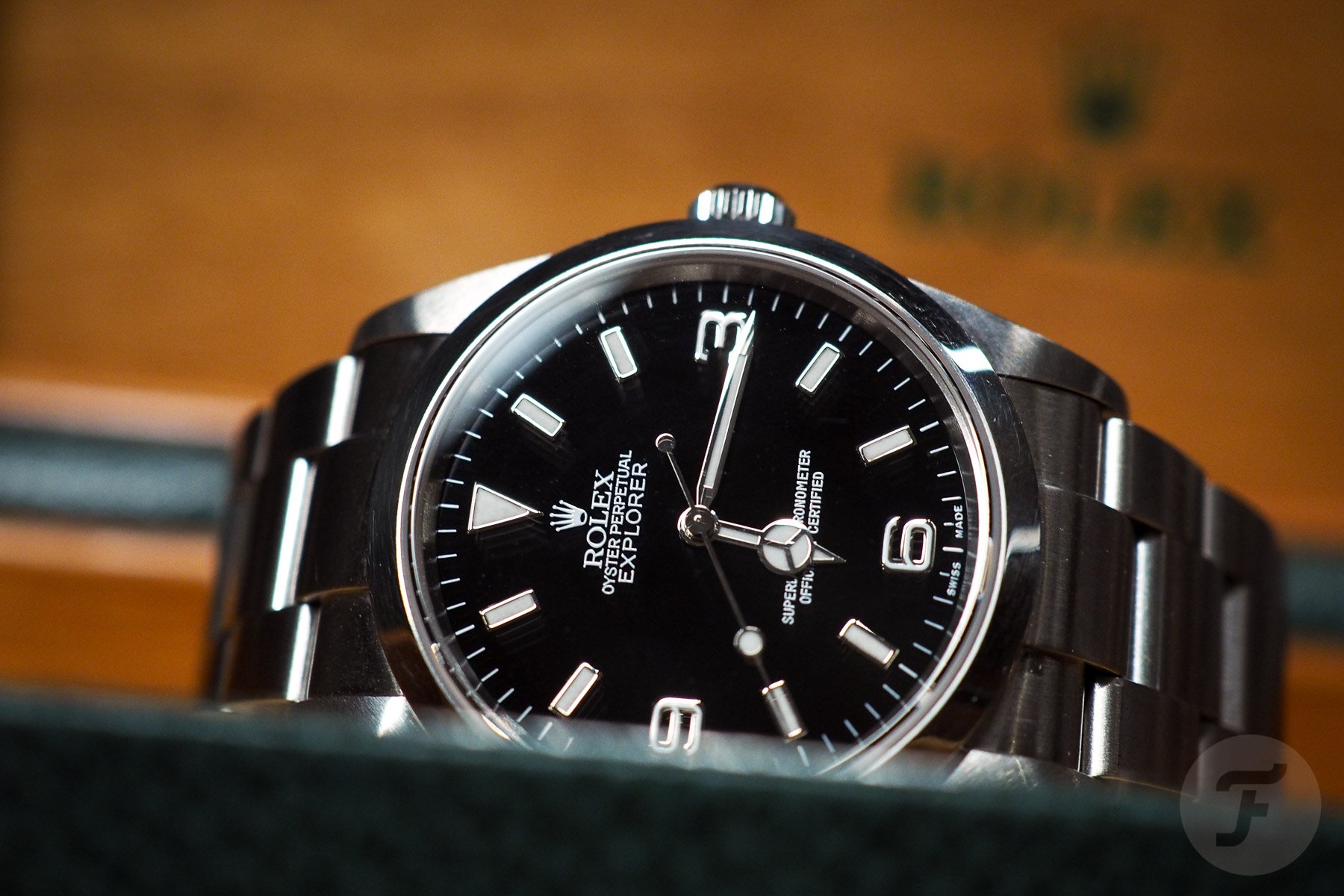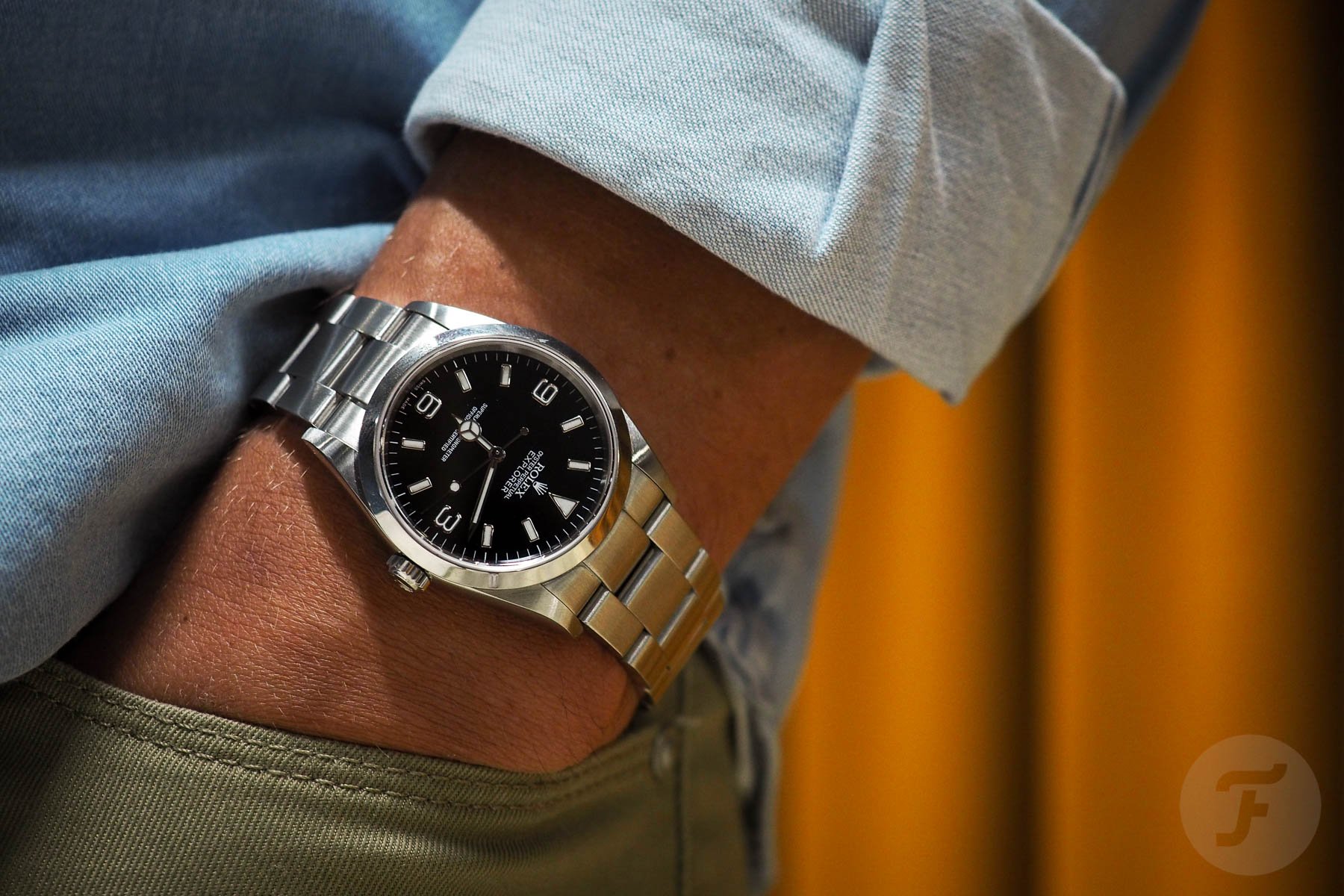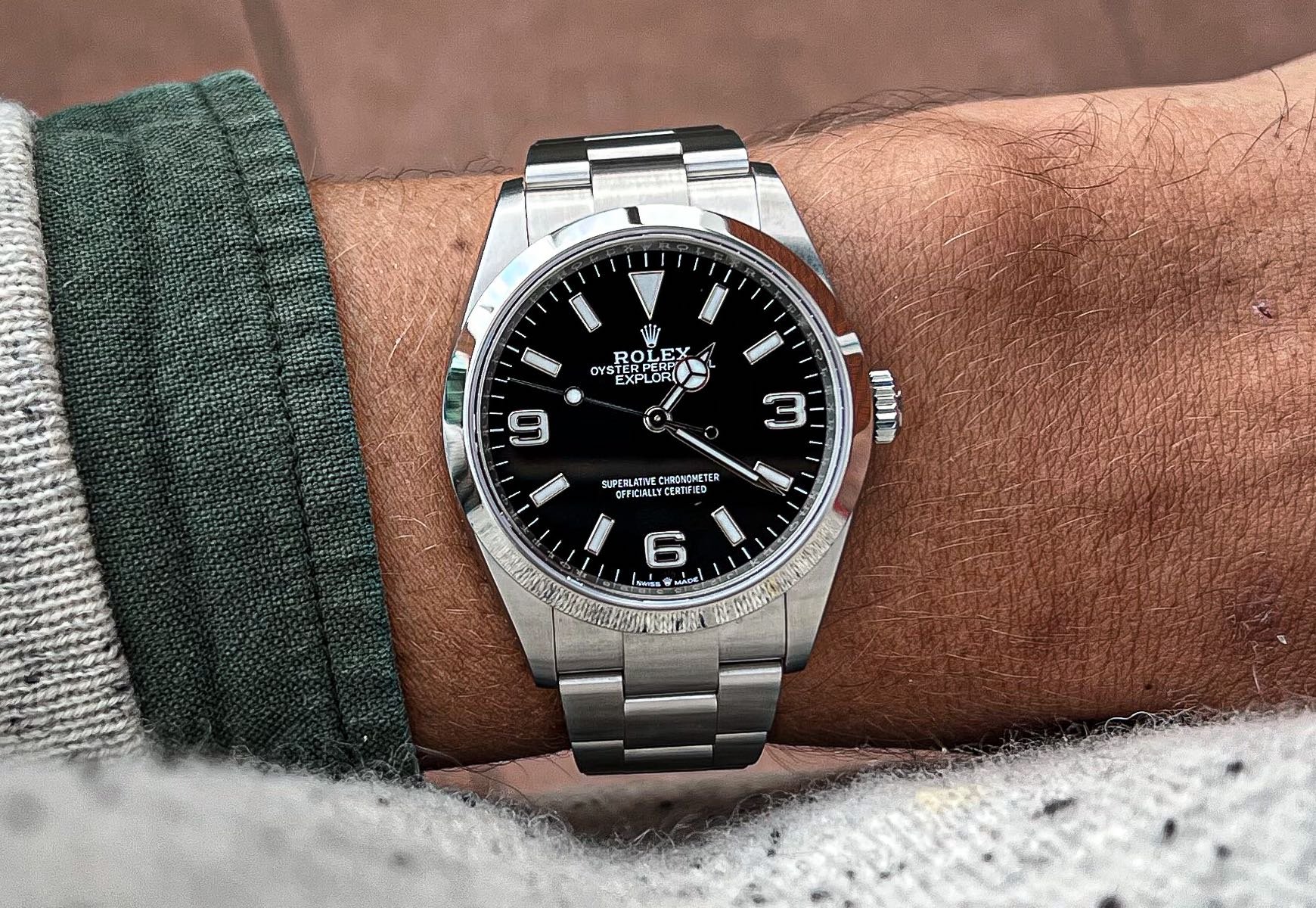Sunday Morning Showdown: The Old 36mm Rolex Explorer 114270 Vs. The New Rolex Explorer 124270
It’s time for another one-man show in the Sunday Morning Showdown. This week, it’ll be a little different, a little more into the nitty-gritty. It does, of course, feature two different watches, but some people might not even see the difference between these two Rolex Explorer models. I do, though, and they drive me nuts. Both the 114270 and the 124270 have their pros and cons, so I thought, “Why not ask the Fratelli what their opinion on the matter is?” But let me first tell you what you’re choosing between, exactly.
Of course, even before I really got into watches, I knew about Rolex. So, when I got more interested, one of the first watches I bought was actually a ’74 Rolex Datejust reference 1601. I regret that decision because it was too fast and too soon to go in that direction. This resulted in an unhappy “marriage” with the watch, and I sold it after a few months. When I bought the Datejust, I decided between it and a 36mm Explorer, and ever since then, the latter has been chasing me around. But before we get into the details, let’s take a look at what happened in last week’s Sunday Morning Showdown.
The Pelagos faceoff
We also had a battle between two very similar watches from the same brand. And it seems like Tudor made the right decision by introducing the somewhat more refined version of the Pelagos in a 39mm case. In last week’s showdown, it got even a few more votes than the OG Pelagos. But at 48% to 52%, we can say that it was basically a draw. I guess that means both models have their own following, and that makes it an even smarter move from Tudor as the sales of one won’t eat into the sales of the other. Well done, Tudor, and thank you all for voting! Now let’s get back to this week’s battle.
A 36mm Rolex Explorer, please
As I said, now that a few years have passed since I bought and sold that vintage Rolex Datejust, I’m back to obsessing about the 36mm Explorer. The only thing is, I have to choose which one. For me, the 36mm size is not a question. The 39mm Explorer ref. 214270 looks too big on me, and besides, the dial also looks like it’s a bit out of proportion. So 36mm it is. But that still leaves me with plenty of options. I do want a somewhat more modern and relatively affordable version though, so let’s start with the reference 14270. But that one uses tritium for the lume (except for the last “Swiss only” iteration) and has hollow end links. I would at least like to have some proper lume, and I do like a sturdier bracelet and clasp.
So, since last year, that leaves us with two references in steel — the 114270, produced from 2001 to 2010, and the 124270, which was introduced last year. And if you’re not so deep into watches or the Explorer specifically, you might not even see the difference between them. Both have a very similar 36mm Oyster case and bracelet. But even though they look very much alike, they’re certainly not. And that’s exactly what this installment of Sunday Morning Showdown is all about.
A superior movement
When you look at the specs of the 2021 Rolex Explorer, everything makes a lot of sense. Let’s start with the movement. The 3230 movement inside is definitely an upgrade from the 3130 caliber inside the 114270. The extended power reserve of 70 hours is a nice bump up compared to the previous 48. The more efficient Rolex Chronergy escapement is also resistant to magnetic fields, just like the blue Parachrom hairspring, which is also better equipped to deal with temperature changes. And both the balance bridge and the oscillator are more shock-resistant than ever. Those are all very nice improvements over the 3130 movement.
But how much am I actually going to notice those in day-to-day life? The 3130 isn’t exactly a slouch either. The extended power reserve of the 3230 is nice, but then again, I wear a different watch almost every day. Knowing my wearing habits, I probably won’t really notice it after all. But what I did notice when I tried out both references was that, even though they almost look exactly the same, there are still enough differences in their appearance to make them feel completely different on the wrist. Let’s take a closer look.
Down to the nitty-gritty
When it comes to the measurements of the case, the differences are incredibly small. I’ve looked up the measurements from many different media outlets and forums alike, and the conclusion is that the new one is slightly shorter from lug to lug, has a 0.6mm-thicker profile, and its bracelet starts at 19 and tapers down to 14mm. The older bracelet tapers from 20 to 16mm. So the new bracelet already starts out slimmer and gets 26% slimmer at the clasp compared to a 20% taper on the older model. I know, we’re going deep, but hang on, because this actually makes a big difference on the wrist.
The newer reference feels more elegant than the older one with the wider bracelet. This is reinforced by the difference in the size of the center links on both Explorers. It’s noticeable, especially on the end link, the one you look at all day. The central portion of the new end link is 8mm wide and 9mm long (like a rectangle). On the older end link, however, it’s 9mm wide and 9mm long (more like a square). And the fact that the outer portions on the end links of both versions measure 5.5mm wide each reinforces the fact that the new bracelet feels more elongated, especially in combination with the dramatic taper. But wait, those aren’t the only differences in the bracelets. Let’s talk about the clasps.
An improved but large clasp
Remember, the bracelet on the new Explorer tapers to 14mm while the older one tapers to 16mm. But the clasp on both versions is a little over 16mm wide. This means that the new clasp, when combined with the slimmer bracelet, looks and feels a lot more substantial on the current Explorer. And that’s also because it’s a bit heavier.
Of course, both the size and the heft are due to the fact that the new clasp is a milled one instead of a folded piece of metal. Quality-wise, I do think that the new clasp feels a lot more substantial and extremely well-made. And let’s not forget it also includes a spring-loaded safety mechanism and an Easylink, with which you can adjust the size of the bracelet by half a centimeter in the blink of an eye. But its larger size in combination with the slimmer bracelet means the proportions are a bit off here, at least to me. And this is not the only area where I think the proportions are a bit off.
Lume, or no lume — that is the question
When you look at the dial of both references, you can see that the numerals and hour markers on the current Explorer have been made slightly bigger. That has probably been done to allow those numerals to be filled with lume (Chromalight). And don’t get me wrong, it had to be done, and together with the other indices, it does look more uniform. But because of those bigger indices and numerals, it almost appears as if the watch surrounding them is slightly smaller.
And although the non-lumed numerals look a bit funky, I do think that the proportions of the older dial are more in sync. You might have to do without the lumed numerals at night, but it’s still very easy to read the time. And in the daytime, the numerals’ painted white filling almost matches the lume on the indices anyway.
More nonchalant
So yes, the new Rolex Explorer ref. 124270 has a superior movement. But because of its slimmer and more dramatically tapered bracelet, bigger clasp, and new dial proportions, I’m leaning more toward the older Explorer reference. The current Explorer feels more refined and sophisticated, and it’s built like a tank. You could say, then, that it is the Explorer to get, especially because its list price of €7,150 is more or less the same as what you’d pay for a full-set Explorer ref. 114270 in good shape on the secondary market.
But, the previous 36mm Explorer is the perfect under-the-radar, more casual, and more nonchalant watch in the Rolex portfolio. Yes, those 20mm wide lugs might be a tad too wide for the 36mm case, and the non-lumed numerals might look a bit quirky. But to me, the older model feels so much better on the wrist. It has more body and feels more like a tool than a piece of jewelry. And that’s precisely what I expect and want from the down-to-earth 36mm Explorer. So there you have it! We don’t have to beat around the bush any longer. For all the reasons mentioned above, I prefer the older Explorer ref. 114270 over the current Explorer ref. 124270.
Time to cast your votes!
But I know someone who got the 114270 while he was on the waiting list for the newer reference. The day after he picked up his pre-owned watch, he got “the call” from his AD that he could collect his brand-new 36mm Explorer. He very much preferred the new bracelet and clasp, so decided to return his 114270 and pick up the new one at the AD. As this anecdote suggests, different people have different priorities and preferences, and I’m very curious to hear what you think. What would you prioritize when putting these two references up against each other, and to which conclusion would that lead you? Let me know in the comments below, and don’t forget to cast your votes!
Truth be told, I may have missed some important differences between these two watches. If you think there’s something else that should definitely be taken into consideration, please do let me and all the other Fratelli know.
You can also find and follow me on Instagram: @fliptheparrot

